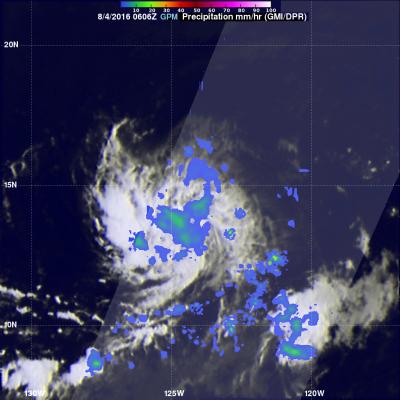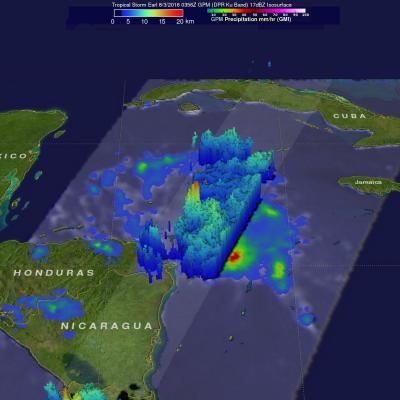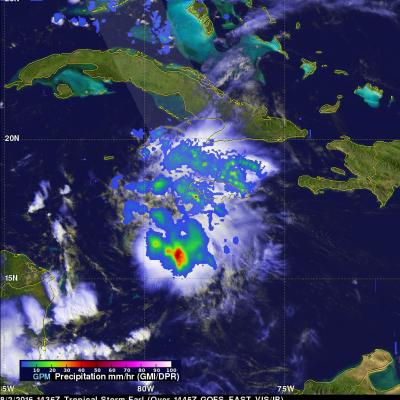Deadly Hurricane Earl's Rainfall Measured With IMERG
Hurricane Earl began as a tropical wave that was tracked by the National Hurricane Surface (NHC) from the African Coast to the Caribbean Sea. The tropical wave drenched the Dominican Republic where it was blamed for the deaths of six people. Southwest of Jamaica on August 2, 2016 the tropical wave developed a closed circulation and Earl was upgraded to a tropical storm. On Wednesday August 3, 2016 Earl became a hurricane when it was located about 150 miles east of Belize. On Thursday Earl made landfall just southwest of Belize City, Belize at about 0600 UTC (2 AM EDT). At landfall Earl had






